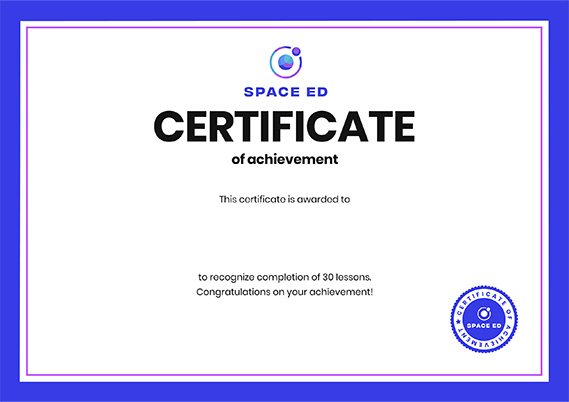Could we survive prolonged space travel? - Lisa Nip
433,863 Views
0 Questions Answered
Let’s Begin…
Prolonged space travel plays a severe toll on the human body: microgravity impairs muscle and bone growth, and high doses of radiation cause irreversible mutations. As we seriously consider the human species becoming space-faring, a big question stands: even if we do break free from Earth’s orbit, can we adapt to the extreme environments of space? Lisa Nip examines our odds.
Additional Resources for you to Explore
A familiar instance of human adaptation can be found in the tolerance of lactose, the primary sugar in milk, by some humans. If you are able to drink milk without gastrointestinal discomfort, you are the lucky recipient of a genetic mutation that allows your body to make lactase enzymes as an adult. As recently as 7,500 years ago, our ancestors were unable to digest milk. But a random mutation that permitted lactose consumption gave some of our ancestors a survival advantage by having extra sources of food to eat, and so the mutation persisted. If you are a human adult that can consume ice-cream with no feelings of pain (caused by the happy proliferation of intestinal bacteria that release carbon dioxide gas, which distends your guts), thank the process of evolution.
Another naturally occurring process that does not receive all the positive attention it deserves is genetic modification. Modern sequencing techniques have provided much evidence that gene transfer events do not only happen within a species, but also across different species. The sea slug (Elysia chlorotica) is one well-known example of an organism that has both “animal” and “plant” genes. It contains its own set of slug genes in addition to genes for the maintenance of chloroplasts that were transferred from algae, which are the photosynthetic organisms that oxygenate Earth. But the sea slug is only one such example that humans are aware of. Earth has many other species that we have yet to explore and understand deeply by way of sequencing.
Given that no known humans have evolved in space, it does not come as a surprise that a human who spends a lot of time there suffers many physical effects, from brittle bones to weakened muscles. This video will also give you some idea of the effects of space on the human body: 5 Ways Space Travel Affects the Human Body.
The human body does not have the capacity to keep up with the brutality of space; that is, evolutionary processes happen too slowly for us to be able to build adequate defenses and adaptations. What, then, can we do to make our longer journeys into space a little easier? By combining what we know about natural evolutionary processes and gene transfer events, can we better equip ourselves for unpredictable rigors?
CRISPR gene drives allow scientists to change sequences of DNA and guarantee that the resulting edited genetic trait is inherited by future generations, opening up the possibility of altering entire species forever. More than anything, the technology has led to questions: How will this new power affect humanity? What are we going to use it to change? Are we gods now? Join journalist Jennifer Kahn as she ponders these questions and shares a potentially powerful application of gene drives: the development of disease-resistant mosquitoes that could knock out malaria and Zika.
About Space Ed
Space Ed helps you untangle the mysteries of space with the universe’s best videos on everything from Einstein's theory of relativity to what it would take to live on Mars. Brush up on the science, philosophy and mystery of space, because the fabric of the universe is the same fabric that connects us all.
Meet The Creators
- Sound Designer Cem Misirlioglu
- Script Editor Mia Nacamulli
- Educator Lisa Nip
- Director Bassam Kurdali
- Producer Fateh Slavitskaya
- Narrator Julianna Zarzycki




